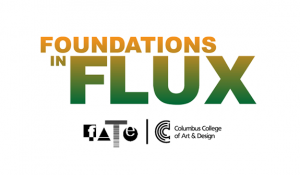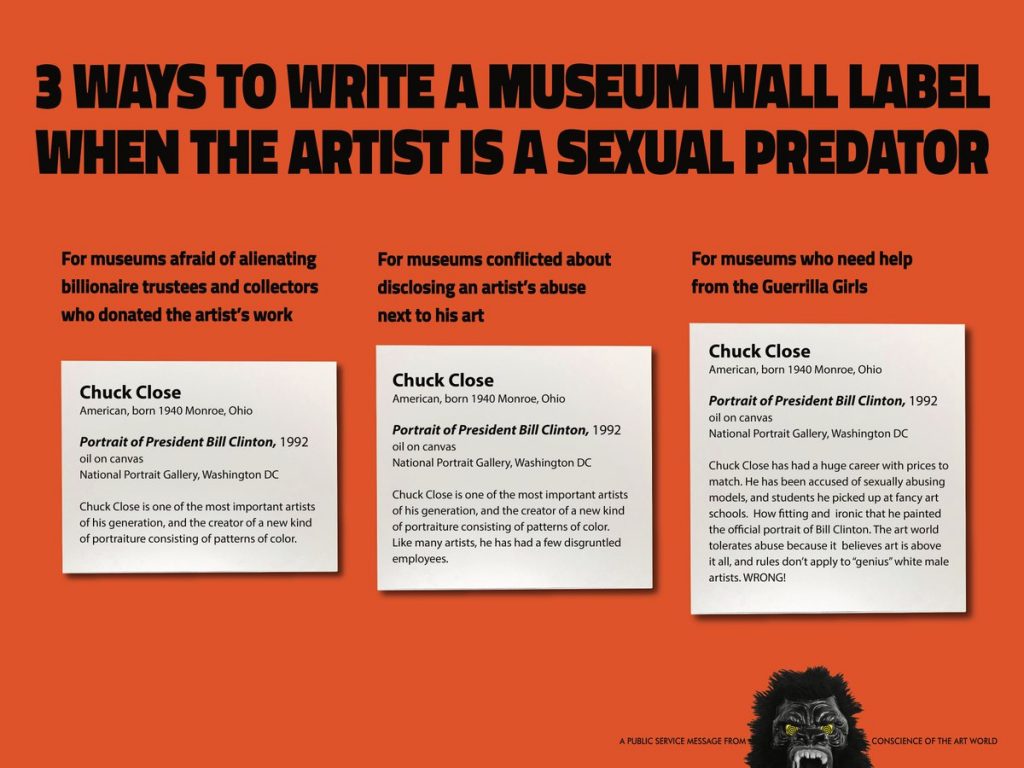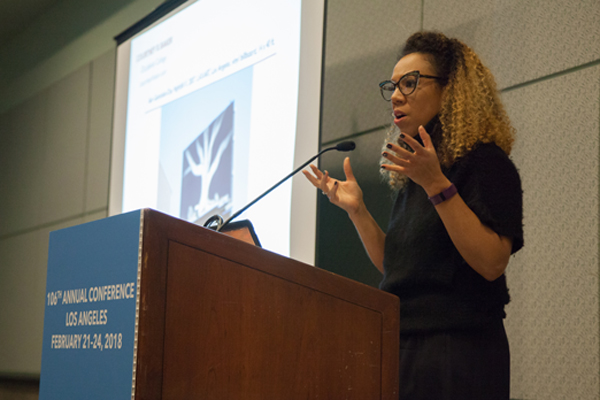CAA News Today
News from the Art and Academic Worlds
posted by CAA — Nov 21, 2018
Want articles like these in your inbox? Sign up: collegeart.org/newsletter
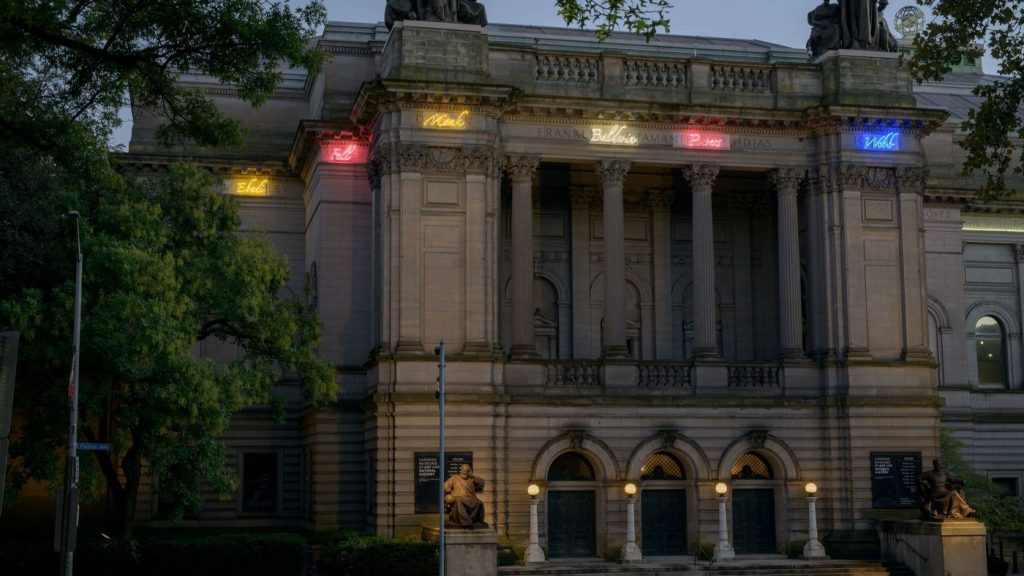
An installation view of Tavares Strachan’s The Encyclopedia of Invisibility, 2018, at the Carnegie International. Photo: Bryan Conley/Carnegie International, via Los Angeles Times
Michael Bloomberg: Why I’m Giving $1.8 Billion for College Financial Aid
The gift to Johns Hopkins University is likely the largest in the history of American higher education, and it has a specific aim. (New York Times)
In ArtReview’s New Power 100, David Zwirner and Kerry James Marshall Rise to the Top, Outranking… the Entire #MeToo Movement?
A look at the magazine’s annual “who’s who” in the contemporary art world. (artnet News)
Task Force Tackles Dearth of Resources for Transgender Museum Professionals
Here are steps you can take right now to be more trans-inclusive. (American Alliance of Museums)
The Coming Wave of Affordable Textbooks
Big changes in textbooks are coming, and libraries will be at the center of them. (Scholarly Kitchen)
The Best of Times, the Worst of Times: Art in the Age of Rising White Supremacy
American culture is embracing a more diverse array of voices and ideas than ever. But it’s also a period of ascendant white supremacy. (LA Times)
Affiliated Society News for November 2018
posted by CAA — Nov 07, 2018
Affiliated Society News shares the new and exciting things CAA’s affiliated organizations are working on including activities, awards, publications, conferences, and exhibitions.
We’re seeking new organizations to join CAA’s Affiliated Societies. Click here to learn more.
Association for Latin American Art (ALAA)
Save the Date: The World Turned Upside Down
The Fifth Triennial Conference of the Association for Latin American Art (ALAA) will take place next year in Chicago, 7-9 March, 2019. Sponsored by DePaul University and the Art Institute of Chicago with support from the National Museum of Mexican Art and the Thoma Foundation, the conference will include a variety of papers around the theme of “Arts of Oppression and Resistance in the American Hemisphere,” as well as additional activities in and around area institutions. For more information, please visit https://associationlatinamericanart.org/triennial/.
The Feminist Art Project (TFAP)
Call for Contributions to Rejoinder, an online journal featuring work at the intersection of scholarship and activism that reflects feminist/queer and social justice perspectives.
me too
The “me too” movement, founded in 2006 by activist Tarana Burke to help young American women of color heal from sexual assault, has gone global. Survivors around the world are giving unprecedented voice to stories of violence and abuse. The next issue of Rejoinder will explore the history, present, and future of “me too” as it relates to contemporary feminist mobilization and theorizing. We welcome contributions that explore any aspects of “me too,” such as how the movement travels across different contexts (such as the home, the academy, the workplace), through different forms of media and face-to-face interactions. What are the most pronounced effects of “me too?” And what difference does adding the hashtag make? Submissions (including essays, commentary, criticism, fiction, poetry, and artwork) should address this theme from feminist, queer, social and racial justice-inspired perspectives. We particularly welcome contributions at the intersection of scholarship and activism. For manuscript preparation details, please see our website at: http://irw.rutgers.edu/about-rejoinder. Rejoinder is published by the Institute for Research on Women at Rutgers University in partnership with The Feminist Art Project. Please send completed written work (2,000-2,500 words max), jpegs of artwork, and short bios to the editor, Sarah Tobias (stobias@rutgers.edu) by December 19, 2018.
Midwest Art History Society (MAHS)
The 46th Annual Conference of the Midwest Art History Society will be held from March 21–23, 2019, in Cincinnati, Ohio. Join us for thought-provoking sessions at the renowned Cincinnati Art Museum (CAM) on Thursday and Friday, March 21 and 22, and at the Taft Museum of Art on Saturday, March 23. On Thursday evening, the keynote lecture will be delivered by S. Hollis Clayson, Bergen Evans Professor in the Humanities at Northwestern University, in association with CAM’s exhibition Paris 1900: City of Entertainment featuring works drawn from the collections of the City of Paris museums. After sessions conclude on Friday, the Contemporary Arts Center in downtown Cincinnati will host an evening reception. Special behind-the-scenes programs at our partner museums will make this conference a particularly memorable experience. For more information and the conference’s call for papers, please visit the organization’s website http://www.mahsonline.org.
Visual Resources Association (VRA)
The next VRA international conference for image media professionals will take place at the Doubletree Hotel in the Little Tokyo area of downtown Los Angeles on March 26-29, 2019 (see: http://www.vraweb.org/conferences/vra2019/). We welcome CAA members as well as any intensive image users and like-minded information professionals to join in on what will be an exciting schedule of workshops, sessions, meetings, tours, and social events in Southern California. The conference schedule can be found at https://vra2019.sched.com/ and registration will open in December 2018.
The VRA offers several awards to assist with attendance at the VRA Annual Conference. The Travel Awards Committee especially encourages applications from new members/first time conference attendees; veteran members who have not been able to attend conferences for several years; international members; solo, isolated, and part-time VR professionals; students considering careers in visual resources; and any member actively participating in the conference who lacks sufficient funding to attend. You do not need to be a member of the VRA to apply for a travel award, but please note that to receive an award an applicant must become a member of VRA and must attend the 2019 Conference. The deadline for receipt of applications is Friday, November 16, 2018, 11:59pm EST. For more information about the types of travel awards, guidelines, and application information, see: http://vraweb.org/apply-for-a-vra-la-2019-travel-award/.
The Visual Resources Association is a multidisciplinary organization dedicated to furthering research and education in the field of image management within the educational, cultural heritage, and commercial environments affiliated with CAA (http://vraweb.org/). For more information about the important work and professional development activities sponsored by the Visual Resources Association or the VRA Foundation, please contact Maureen Burns, VRA’s CAA Affiliate Representative at moaburns@gmail.com or 310-489-3792.
Society of Architectural Historians (SAH)
The Society of Architectural Historians is accepting session proposals for the SAH 2020 Annual International Conference in Seattle, Washington (April 29–May 3). The Society invites its members, including graduate students, independent scholars and representatives of SAH chapters and partner organizations, to chair a session at the conference. Session proposals covering every time period and all aspects of the built environment, including landscape and urban history, are encouraged. View the Call for Sessions and submit a proposal online at sah.org/2020/call-for-sessions. The submission deadline is January 15, 2019.
In a joint program with the Athenaeum of Philadelphia, SAH is pleased to offer the Charles E. Peterson Fellowship to support the participation of a graduate student in the research and writing for a volume in the Buildings of the United States (BUS) series and/or SAH Archipedia, the Society’s online architectural resource. The recipient will research some aspect of American architecture prior to 1860, which they may choose from a list of topics provided by authors of forthcoming BUS books. Applications are due by January 2, 2019.
The Sally Kress Tompkins Fellowship, a joint program of SAH and the National Park Service’s Historic American Buildings Survey (HABS), permits a graduate student in architectural history or a related field the opportunity to work on a 12-week HABS history project during the summer of 2019. The Fellow will prepare a written history that focuses on a significant U.S. building or site for the permanent HABS collection at the Library of Congress. The award consists of a $12,000 stipend and includes travel, hotel accommodation, and registration for the SAH 2019 annual conference up to $1,000. Applications are due by December 31, 2018.
Association of Art Museum Curators & AAMC Foundation
The Association of Art Museum Curators & AAMC Foundation is currently seeking nominations for the 2019 Awards for Excellence, its annual award dedicated to recognizing curators whose work offers new methodologies, considers the public’s understanding, and advances the field. Since their launch in 2004, nearly 170 curators have received this award from AAMC. Click here to view past recipients.
Only affiliated and independent curator(s) working in the nonprofit sector can receive an award. All nominations must be submitted by AAMC members in good standing, and we encourage self-nominations. Nominated curators do not need to be AAMC members but must be eligible for membership and become a member should they be selected as an Awardee. Those in other fields and in for-profit settings cannot be nominated. Self-nominations are encouraged and welcomed.
A nominator may submit more than one nomination in one or more of the following categories for work on view or published between January 1 and December 31, 2018:
- Outstanding Printed Exhibition or Permanent Collection Catalogue (awarded by art organization operating budget category)
- Outstanding Exhibition or Installation (awarded by art organization operating budget category)
- Outstanding Article or Essay (digital or print)
- Outstanding Digital Publication
Awardees are kept confidential until they are announced at the Annual Conference & Meeting during an Awards for Excellence reception on Sunday, May 5, 2019, in New York City. We hope that all Awardees will be able to join us at the event. Ability to attend the event does not influence the award selection process.
All nominations must be submitted through our online portal by 12PM ET on Friday, December 14. The deadline is fast approaching, so click here to submit your nomination today!
International Sculpture Center (ISC)
The International Sculpture Center, publisher of Sculpture magazine is a non-profit member supported organization promoting sculptors internationally. For the 2018 holiday season, the ISC is offering great gift deals. This includes 1 subscription for $35 or 2 for $60, 30% off ISC Memberships, All 5 ISC Press Publications for just $75, and the ISC Art Sale Project: Sculptors Supporting Sculpture. For more information, please visit: http://www.sculpture.org/holiday/
The ISC will host the 29th International Sculpture Conference in Portland, Oregon in Fall 2019. The Call for Panels will open this winter. For updates, visit: www.sculpture.org/portland19
Pacific Arts Association (PAA)
Pacific Arts Association XIII International Symposium March 25-28, 2019, Brisbane , Australia. Hosted by Queensland Museum, State Library of Queensland, Queensland Art Gallery/Gallery of Modern Art and Queensland Performing Arts Centre. Call for papers is now closed. Please join us in March. The theme of this symposium is RESILIENCE: sustaining, re-activating and connecting culture.
For more information contact paa.2019@qm.qld.au
Conference: Making Connections: ni-Vanuatu Artists, Objects and Histories, 2- – 22nd March 2019 at the national Library and Archives, Port Vila, Vanuau. Hosted by the Pacific Chapter of the Pacific Arts Association.
For more information contact ks-kf@xtra.co.nz
Symposium: Recent Advances in Barkcloth Conservation: at the Royal Botanic Gardens, Kew, UK. December 7th, 2018. This one-day meeting presents diverse approaches to understanding the making, conservation and display of barkcloth in several tropical regions. It will be of interest to conservators, curators, anthropologists, art historians, makers, and all who value this beautiful material
For more information contact m.nesbitt@kew.org
Foundations in Art: Theory and Education (FATE)
http://www.foundations-art.org/
Early Bird Registration Deadline Extended: November 15 for FATE’s 17th Biennial Conference, “Foundations in Flux,” will be hosted by Columbus College of Art & Design in Columbus, Ohio on April 4th-6th, 2019.
Call for Artwork Deadline: December 15: FATE 2019 National Juried Members Exhibition
More info: http://www.foundations-art.org/conferences
Positive Space is FATE’s bi-monthly podcast providing opportunities for those passionate about art foundations to discuss and promote excellence in the development and teaching of college level foundations in art & design studio and history classes. To check out the latest episodes, featuring Libby McFalls and Michael Arrigo, visit: https://www.foundations-art.org/positive-space
If you have podcast ideas, contact us! Positive Space has a phone number: 904-990-FATE. Give us a call & record a message today!
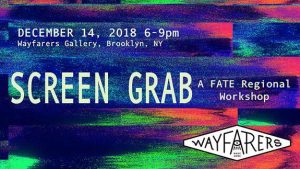 Join us December 14th, for a “Screen Grab,” a FATE Regional Workshop at Wayfarers Gallery, 1109 Dekalb Ave, Brooklyn, 11221. How are institutions using “the screen” in their visual art and design curriculum? The workshop will include hands-on screen-printing demos, innovative ways to incorporate screen printing even without formal facilities, introducing technological screen time into the studio classroom, and creating collaborative art work. Register with Meredith Starr at starrm@sunysuffolk.edu
Join us December 14th, for a “Screen Grab,” a FATE Regional Workshop at Wayfarers Gallery, 1109 Dekalb Ave, Brooklyn, 11221. How are institutions using “the screen” in their visual art and design curriculum? The workshop will include hands-on screen-printing demos, innovative ways to incorporate screen printing even without formal facilities, introducing technological screen time into the studio classroom, and creating collaborative art work. Register with Meredith Starr at starrm@sunysuffolk.edu
More info: https://www.foundations-art.org/regional-events
Also join us during CAA 2019 for FATE’s Affiliate session, “Get Up, Stand Up: Contingent Faculty and the Future of Higher Education in the Visual Arts,” Friday, Feb 15, 2019, from 6 – 7:30pm in the Bryant Suite at the New York Hilton Midtown. Chaired by Naomi J. Falk and Richard Moninski, with panelists Christopher Williams, Mark Stemwedel, and Laura Rodman Huaracha. Increasingly, tenure-track positions disappear, contingent faculty numbers swell, and those who are left standing teach more classes. Is this sustainable and how do we support each other? https://caa.confex.com/caa/2019/meetingapp.cgi/Session/2304
Association for Textual Scholarship of Art History (ATSAH)
Karen Hope Goodchild, “Masaccio, Andrea del Sarto, Il Lasca, and the Sausage School of Florence,” Publication: Source. Volume 36, number 3/4 (Spring/Summer 2017), Seite [178]-187. Publisher: [2017]
Liana De Girolami Cheney, “The Symbolism of the Skull in Vanitas: Homo bulla est,” Journal of Cultural and Religious Studies (Fall 2018), Vol. 6. No. 5 (May 2018); 267-284.
Award invitation: ASSOCIATION FOR TEXTUAL SCHOLARSHIP IN ART HISTORY –AWARDS for Students and Scholars
In commemoration of our 30th anniversary, ATSAH plans to offer two awards: one prize for the best article by an emerging scholar (no higher than Associate level). The topic may range from classical to Pre-Raphaelite art, reflecting the aims of ATSAH. The second is a small travel grant for junior scholar presenting a paper an ATSAH session.The board of ATSAH selects these awards.
For further data, contact: Liana Cheney, PhD, President of ATSAH, lianacheney@earthlink.net
New Media Caucus
Media-N Journal of the New Media Caucus announces publication of Vol 14 No 1 (2018): CAA Conference Edition 2018 https://iopn.library.illinois.edu/journals/median/issue/view/4
This collection of essays and reports documents many of the activities of the New Media Caucus at the 2018 College Art Association Conference in Los Angeles, California, which took place February 22–24, 2018. More information about these gatherings can be found at http://www.newmediacaucus.org/2018-caa-los-angeles-events/
CAA Announces 2019 CAA-Getty International Program Participants
posted by CAA — Nov 02, 2018
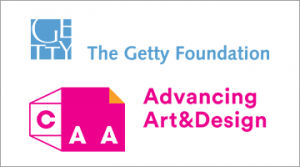
CAA is pleased to announce this year’s participants in the CAA-Getty International Program. Now in its eighth year, this international program supported by the Getty Foundation will bring fifteen new participants and five alumni to the 2019 Annual Conference in New York City. The participants—professors of art history, curators, and artists who teach art history—hail from countries throughout the world, expanding CAA’s growing international membership and contributing to an increasingly diverse community of scholars and ideas. Selected by a jury of CAA members from a highly competitive group of applicants, participants will receive funding for travel expenses, hotel accommodations, conference registration, CAA membership, and per diems for out-of-pocket expenditures.
At a one-day preconference colloquium, to be held this year at Parsons School of Design, the fifteen new participants will discuss key issues in the international study of art history together with five CAA-Getty alumni and several CAA members from the United States, who also will serve as hosts throughout the conference. The preconference program will delve deeper into subjects discussed during last year’s program, including such topics as postcolonial and Eurocentric legacies, interdisciplinary and transnational methodologies, and the intersection of politics and art history.
This is the second year that the program includes five alumni, who provide an intellectual link between previous convenings of the international program and this year’s events. They also serve as liaisons between CAA and the growing community of CAA-Getty alumni. In addition to serving as moderators for the preconference colloquium, the five alumni will present a new Global Conversation during the 2019 conference titled Creative Pedagogy: Mapping In-between Spaces Across Cultures.
The goal of the CAA-Getty International Program is to increase international participation in the organization’s activities, thereby expanding international networks and the exchange of ideas both during and after the conference. CAA currently includes members from over 50 countries around the world. We look forward to welcoming the following participants at the next Annual Conference in New York City.
2019 PARTICIPANTS IN THE CAA-GETTY INTERNATIONAL PROGRAM
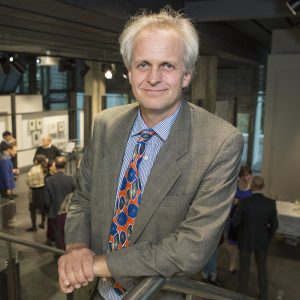
Richard Bullen is associate professor of art history at the University of Canterbury, New Zealand. He graduated with a PhD from the University of Otago in 2003. Bullen’s principal areas of research are Japanese aesthetics and East Asian art collections in New Zealand. During his years living in Japan, he studied tea ceremony and calligraphy and has since published on aspects of tea ceremony aesthetics. With James Beattie he recently completed a major publicly-funded project to document New Zealand’s largest collection of Chinese art, the Rewi Alley Collection at Canterbury Museum. Their website catalogues all 1400 objects in the collection: http://www.rewialleyart.nz. Together, they also have produced a number of publications, including New China Eyewitness: Roger Duff, Rewi Alley and the Art of Museum Diplomacy (2017) and co-curated three exhibitions. Bullen is currently working on art made in World War II by Japanese POWs held in Australasia.
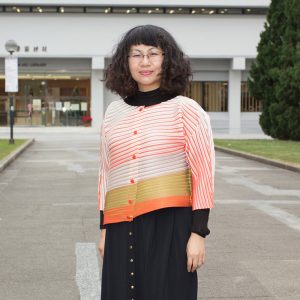
Pedith Chan is an assistant professor of Cultural Management in the Faculty of Arts at the Chinese University of Hong Kong. She received her PhD in Art and Archaeology from SOAS, University of London. Before joining the Chinese University of Hong Kong Chan was an assistant curator at the Hong Kong Museum of Art, and an assistant professor at the City University of Hong Kong. Her research interests focus on the production and consumption of art and cultural heritage in modern and contemporary China. Recent publications include The Making of a Modern Art World: Institutionalization and Legitimization of Guohua in Republican Shanghai (Leiden: Brill, 2017), “Representation of Chinese Civilization: Exhibiting Chinese Art in Republican China,” in The Future of Museum and Gallery Design (London: Routledge, 2018), and “In Search of the Southeast: Tourism, Nationalism, Scenic Landscape in Republican China,” (Twentieth-Century China, 2018). She is currently researching the making of scenic sites in modern China.
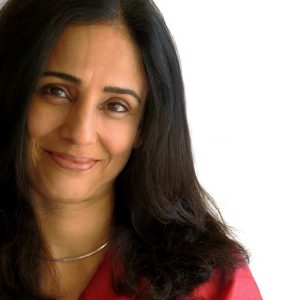
Swati Chemburkar is an architectural historian who lectures and directs a diploma course on Southeast Asian Art and Architecture at Jnanapravaha, a center for the arts in Mumbai, India. In addition, she is a visiting lecturer at the School of Oriental and African Studies (SOAS), London, and SOAS’s summer schools in Southeast Asian countries. Chemburkar’s work focuses on eighth- through twelfth-century Southeast Asia, particularly the relationship between texts, rituals, art, architecture, and cross-cultural exchanges in maritime Asia. Her ongoing research explores the spread of the ancient Śaiva sect of Pāśupatas in this region. She has edited Art of Cambodia: Interactions with India (Marg Magazine, Volume 67 Number 2, December 2015-March 2016) and contributed papers to several journals and publications, including the recent “Visualising the Buddhist Mandala: Kesariya, Borobudur and Tabo” in India and Southeast Asia: Cultural Discourse (K. R. Cama Oriental Institute, Mumbai, 2017) and “Pāśupata Sect in Ancient Cambodia and Champa” (co-authored with Shivani Kapoor) in Vibrancy in Stone: Masterpieces of the Đà Nẵng Museum of Cham Sculpture (River Books, 2017).
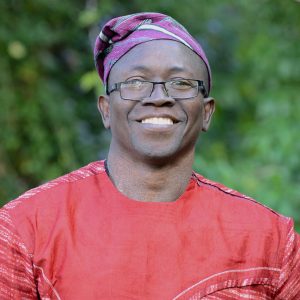
Stephen Fọlárànmí is a senior lecturer in the Department of Fine & Applied Arts, Ọbáfémi Awólọ́wọ̀ University, Ilé-Ifè, Nigeria. His research focuses on Yoruba art and African mural art and architecture. In particular, Fọlárànmí’s extensive research on the art and architecture of the Òyó and Iléṣà palaces has been published in journals, conference proceedings, and as book chapters. A recent example, “Palace Courtyards in Iléṣà: A Melting Point ofTraditional Yorùbá Architecture,” co-authored with Adémúlẹ̀yá, B.A., was published in Yoruba Studies Review 2, no. 2 (Spring 2018): 51-76. Fọlárànmí was a recipient of the first Höffmann-Dozentur für Interkulturelle Kompetenz at University of Vechta, Germany (2008-09). As an artist Fọlárànmí has exhibited his work in Nigeria, London, Germany, and the United States. He was the chair of the Department of Fine and Applied Arts, Obafemi Awólọ́wọ̀ University, Ile-Ife, between August 2016 and January 2018. Currently, he is a research fellow in the Fine Arts Department, Rhodes University, Grahamstown, South Africa.
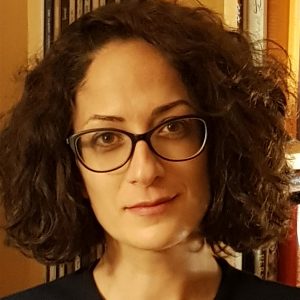
Negar Habibi is a Persian art historian and lecturer in Islamic art history at the University of Geneva, Switzerland, where she teaches history of Persian painting from early Islamic times until the modern era. She completed a PhD in 2014 in art history at the Aix-Marseille University in France with a dissertation titled “The Farangi sāzi and Paintings of Ali Qoli Jebādār: an Artistic Syncretism under Shah Soleymān (1666-1694).” Habibi conducts research on paintings from early modern Iran. Adopting a multidisciplinary approach, her work focuses on the career and life of the artist, especially issues of signature authenticity, gender, and artistic patronage in early modern Iranian society. She has published several articles on the art and artists of late-seventeenth-century Iran, and her book titled Ali Qoli Jebādār et l’occidentalisme safavide: une étude sur les peintures dites farangi sāzi, leurs milieux et commanditaires sous Shah Soleimān (1666-94) was published in January 2018 by Brill.
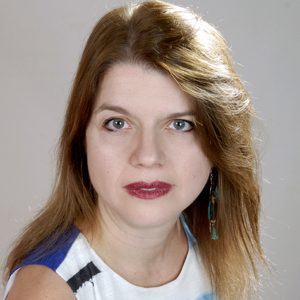
Iro Katsaridou has been the curator of modern and contemporary art at the Museum of Byzantine Culture in Thessaloniki, Greece since 2005. She studied art history at the Aristotle University of Thessaloniki and the Université Paris I-Sorbonne, and also pursued museum studies at the City University of New York. Her doctoral dissertation (Aristotle University, 2010) focused on contemporary Greek photography from 1970-2000. For the past five years Katsaridou has been researching historical photography in Greece, seeking to unravel the role of politics in the formation of photographic representations. In this particular field she also has curated exhibitions of photography and art in wartime (World War I and II) and edited related catalogues. She has co-edited a book about photography during the Nazi Occupation of Greece (1941-1944) and written articles and book chapters on photography (both historical and contemporary), exhibition display policies, as well as the relationship between contemporary Greek art and politics.
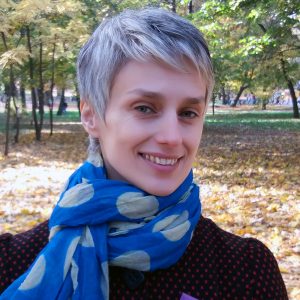
Halyna Kohut is an associate professor in the Faculty of Culture and Arts at the Ivan Franko National University of Lviv, Ukraine, where she teaches history of art, contemporary art, and history of theatrical costume. Originally educated as a textile artist, she received a PhD from the Lviv National Academy of Arts with a dissertation on seventeenth- and eighteenth-century Ukrainian kilims. She is the recipient of scholarships and grants from the Austrian Agency for International Mobility and Cooperation in Education, Science and Research, the Canadian Institute of Ukrainian Studies at the University of Alberta, and the Queen Jadwiga Foundation at the Jagiellonian University in Cracow. Kohut studies Ukrainian kilims as an intermediate zone between Oriental and Western design traditions formed on the so-called Great cultural frontier between the Christian West and Islamic East. She is especially interested in the migration of ornamental patterns as well as the articulation of textile’s social and political meanings in the historical context.
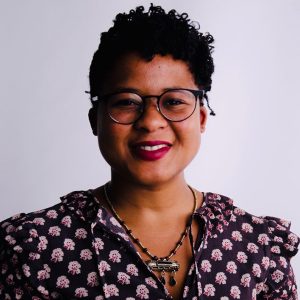
Zamansele Nsele is an art historian and a lecturer in design studies in the Faculty of Art, Design and Architecture at the University of Johannesburg, South Africa. She recently submitted her doctoral thesis in Art History & Visual Culture, titled Post-Apartheid Nostalgia and the Future of the Black Visual Archive. In 2018, Nsele was included in the Mail & Guardian’s prestigious list of Top 200 Young South Africans. She has presented her PhD research at Vanderbilt University and Rutgers University (USA), the University of East Anglia (UK), the University of Ghana in Accra (Ghana), and Rhodes University and the University of Cape Town (South Africa). In July 2018, she was a guest speaker at the Museum Conversations Conference hosted by the University of Namibia and the Goethe-Institut Namibia. Her research interests include post-Apartheid nostalgias, contemporary African art, blackface minstrelsy in South African visual culture and Africana studies.
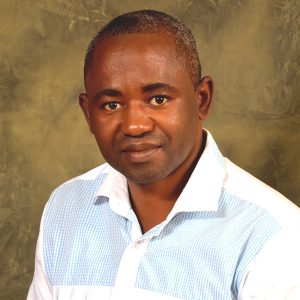
Chukwuemeka Nwigwe is a Nigerian artist and art historian who teaches fashion/textile design and art history at the University of Nigeria Nsukka. He holds a PhD in art history, MFA in textile design, and BA in fine and applied arts from the same university. Nwigwe’s current research is on identity, exemplified in two recent publications: “Fashioning Terror: The Boko Haram Dress Code and the Politics of Identity” (Journal of Fashion Theory, January 2018) and “Breaking the Code: Interrogating Female Cross Dressing in Southeastern Nigeria” (posted online as part of a 2018 ACLS African Humanities Program Postdoctoral Fellowship). Nwigwe also practices as a studio artist. His recent studio experiments with waste plastic, synthetic bags, and foil wrappers, usually woven arbitrarily, have been influenced largely by his research on bird nests begun during his MFA studies.
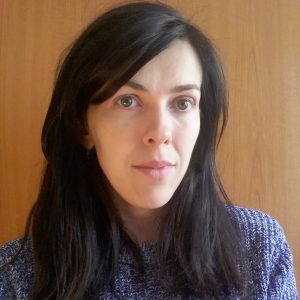
Oana Maria Nicuță Nae is an assistant professor in the Department of Art History and Theory, Faculty of Visual Arts and Design, George Enescu National University of Arts, Iasi, Romania. She received a PhD in art history from the same university, where she currently teaches courses on the history of modern European art, the history of design, and art and society in modern Europe. Most recently she published “The Materialization of Light in the Art of the (Neo-) Avant-Gardes,” in Objects and Their Traces: Historical Gazes, Anthropological Narratives, Cristina Bogdan, Silvia Marin Barutcieff (coord.), Bucharest University Press (Bucharest, 2018). Nicuță Nae’s current research focuses on the representation of women in Romanian modern art. She also studies multiple modernities, taking into account the particular position of Romanian art narratives in regional and global attempts to construct encompassing ones. Recently she has started parallel research on the notion of influence in nineteenth-century Romanian and European art.
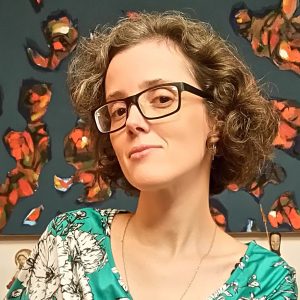
Tamara Quírico is an associate professor in the Art Institute of the Universidade do Estado do Rio de Janeiro (State University of Rio de Janeiro, UERJ, Brazil), where she teaches courses to undergraduate students majoring in art history and visual arts and art history courses to graduate students pursuing MA and PhD degrees. She earned her PhD in social history from the Universidade Federal do Rio de Janeiro, in a joint supervision program with the Università di Pisa (Italy), in which she studied changes in the iconography of the Last Judgment in fourteenth-century Tuscan painting. Her dissertation, “Inferno and Paradiso: Representations of the Last Judgment in Fourteenth-Century Tuscan Painting,” was published in Portuguese in 2014. Quírico studies Italian paintings from the thirteenth and fifteenth centuries, focusing in particular on the uses and functions of Christian images, as well as devotional practices and exchanges between Christian images from Europe and Spanish America.
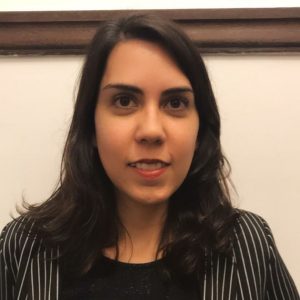
Juliana Ribeiro da Silva Bevilacqua is a specialist in African and Afro-Brazilian art. She studied at the University of São Paulo, where her PhD dissertation was on the Museu do Dundo in Angola (1936–61). From 2004–14 she worked as a researcher at the Museu Afro Brasil in São Paulo. She collaborates with different museums in Brazil researching African art and Afro-Brazilian art collections, including the Museu de Arte de São Paulo and the Museu de Arqueologia e Etnologia at the University of São Paulo. In 2015 she was a guest editor of Critical Interventions: Journal of African Art History and Visual Culture in an issue dedicated to Afro-Brazilian Art. Since 2017 she has been a professor collaborating with the graduate program in Art History at the University of Campinas (Unicamp). Recently she was a visiting professor at the Universidad de Los Andes, Bogota, Colombia, in the Connecting Art Histories program sponsored by the Getty Foundation.
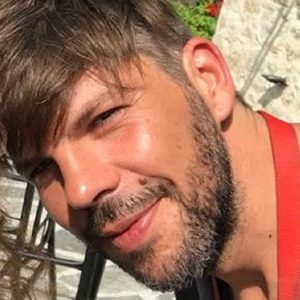
Marko Stamenkovic, born in the former Yugoslavia, is an associate curator of ZETA Contemporary Art Center in Tirana, Albania. He is an art historian and transcultural theorist with a strong interest in the decolonial politics of race, ethnicity, and sexuality. Over the past decade, he has been working primarily in the field of contemporary visual arts as a freelance curator, critic, and writer focused on the intersection of visual thinking and social theories, political philosophies, and cultural practices of the marginalized and the oppressed. He holds a PhD in philosophy from Ghent University (Belgium) where he worked on questions of sacrifice, self-sacrifice in protest, and suicide to explore the relationship between human mortality and politico-economic powers on the darker side of democracy, from a perspective of the global South. He is a member of AICA (International Association of Art Critics) and IKT (International Association of Curators of Contemporary Art).
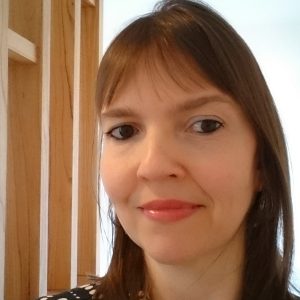
Viviana Usubiaga holds a PhD in art history from the Universidad de Buenos Aires (UBA) in Argentina. She is an associate professor of contemporary art at the Universidad Nacional de San Martín and an assistant professor of modern and contemporary art history at UBA. Usubiaga is also an adjunct researcher of the Consejo Nacional de Investigaciones Científicas y Técnicas (CONICET) and a board member of the Centro Argentino de Investigadores de Arte (CAIA). Her fields of interest include visual arts, literature, and museum studies, focusing on the political impact of transnational circulation of artistic images and texts during socially traumatic periods, including dictatorships and post-dictatorships in South America. Being a specialist in resistance art practices and institutional cultural politics, Usubiaga is the author of Imágenes inestables. Artes visuales, dictadura y democracia en Buenos Aires (2012). She also organizes independent curatorial projects in which she experiments with using scholarly methodologies in non-academic or non-specialist settings.
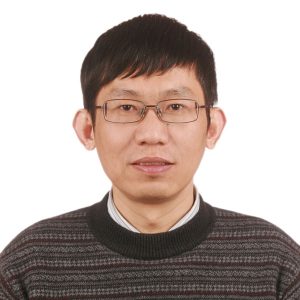
Jian Zhang was born in Hangzhou, China, and earned his PhD in art theory and history from the China Academy of Art, Hangzhou. He is a professor of art history at the School of Art and Humanities as well as the chief librarian of the Academy Library at the same university. His present research focuses on expressionism (formalism) in modern art historiography as well as the problem of its modernity. He is the author of Life of the Visual Form of Art, The History of the Western Modern Art, and An Alternative Story: Expressionism in the Western Modern Art Historiography, and also the translator of the Chinese edition of Wilhelm Worringer’s Form in Gothic, Heinrich Wolfflin’s The Sense of Form in Art: A Comparative Psychological Study (Italien und das deutsche Formgefühl) and Conrad Fiedler’s On Judging Works of Visual Art.
PARTICIPATING ALUMNI
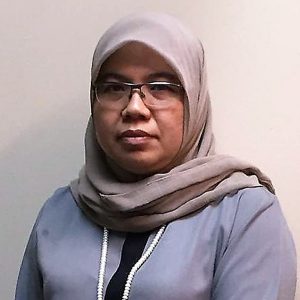
Sarena Abdullah is a senior lecturer in the School of the Arts at the Universiti Sains Malaysia in Penang, where she teaches art history to undergraduate and graduate students. She received an MA in art history from the University at Buffalo, State University of New York, and a PhD in art history from the University of Sydney in Australia. Specializing in contemporary Malaysian art with a broader interest in Southeast Asian art, Abdullah was the inaugural recipient of the London, Asia Research award given by Paul Mellon Center (London) and Asia Art Archive (Hong Kong). Her book Malaysian Art since the 1990s: Postmodern Situation was published in 2018, as was Ambitious Alignments: New Histories of Southeast Asian Art, for which she was a co-editor, published by the Power Institute and National Gallery Singapore. She first participated in the CAA-Getty International Program in 2016 and presented a paper as part of the program’s reunion during the 2017 conference.
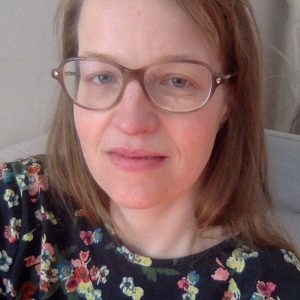
Katarzyna Cytlak is a Polish art historian based in Buenos Aires, Argentina, whose research focuses on Central European and Latin American artistic creations in the second half of the twentieth century. She studies conceptual art, radical and utopian architecture, socially engaged art, and art theory in relation to post-socialist countries from a transmodern and transnational perspective. In 2012, she received a PhD from the University Paris 1 Panthéon-Sorbonne, France. Cytlak was a postdoctoral fellow at the CONICET – National Scientific and Technical Research Council, Argentina (2015-2017). She is currently working as a researcher and professor at the Center for Slavic and Chinese Studies, University of San Martín, Argentina. Selected publications include articles in Umění/Art, Eadem Utraque Europa, Third Text, and the RIHA Journal. Cytlak is a grantee of the University Paris 4 Sorbonne (Paris), the Terra Foundation for American Art (Chicago, Paris) and the Institut National d’Histoire de l’Art (INHA, Paris). In 2018, she participated in the CAA-Getty International Program.
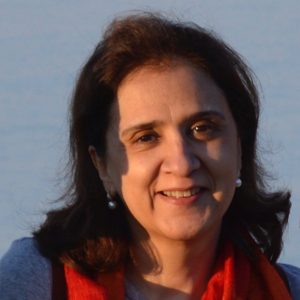
Nadhra Khan is a specialist in the history of art and architecture of the Punjab from the sixteenth to the early twentieth century. She received a PhD from the University College of Art & Design, University of the Punjab, Lahore, and teaches art history at Lahore University of Management Sciences, Lahore, Pakistan. Khan’s research focuses on the visual and material culture of the Punjab region during the Mughal, Sikh, and colonial periods. Her publications address several misconceptions and misrepresentations of Mughal and Sikh art and architecture as well as the state of art and craft in the Punjab under the British Raj and reflect the wide range of her interests and expertise.
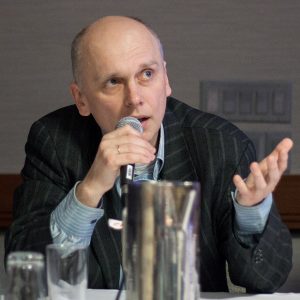
Nazar Kozak is a senior research scholar in the Department of Art Studies in the Ethnology Institute at the National Academy of Sciences of Ukraine. Previously he also taught the history of art at the Ivan Franko National University of Lviv. Kozak has received scholarships and grants from the Fulbright Scholar Program, State Scholarships Foundation of Greece, the American Council of Learned Societies, the Austrian Agency for International Mobility, and the Shevchenko Scientific Society in the United States. Kozak’s primary research is on Byzantine and post-Byzantine art in Eastern Europe. He is the author of Obraz i vlada: Kniazhi portrety u mystetstvi Kyïvskoï Rusi XI stolittia (Image and authority: Royal portraits in the art of Kyivan Rus’ of the eleventh century, Lviv, 2007). More recently, he has begun to work on contemporary activist art. His article on the art interventions during the Ukrainian Maidan revolution was published in the Spring 2017 issue of the Art Journal; it received an honorable mention as a finalist for that year’s Art Journal Award. Kozak participated in the CAA-Getty International Program in 2015 and presented a paper as part of the program’s reunion during the 2017 conference.
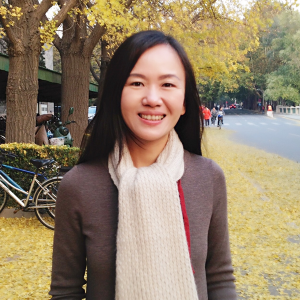
Chen Liu teaches art history and architecture at Tsinghua University in Beijing, China, where she received a bachelor’s degree in architecture with honors. After receiving a master’s in architecture and urban planning from the University of Maryland in 2000, she practiced as an architect in Washington DC until 2005. In 2011, she received a PhD in art history from Princeton University, specializing in Renaissance and Baroque art and architecture. In 2012, funded by an Andrew W. Mellow Fellowship, she helped create and direct the first Villa I Tatti summer research seminar designed specifically for Chinese scholars. “The Unity of the Arts in Renaissance Italy” provided participants with the opportunity to study firsthand the art and architecture of Renaissance Italy. Liu also teaches courses on the visual arts at Beijing Film Academy and Tongji University (Shanghai). She publishes widely on early modern art and architecture, as well as on the response of Chinese scholars to the Italian Renaissance. For the academic year 2018-2019 Liu is a Harvard-Yenching Institute Visiting Scholar at Harvard University.
News from the Art and Academic Worlds
posted by CAA — Oct 31, 2018
Want articles like these in your inbox? Sign up: collegeart.org/newsletter
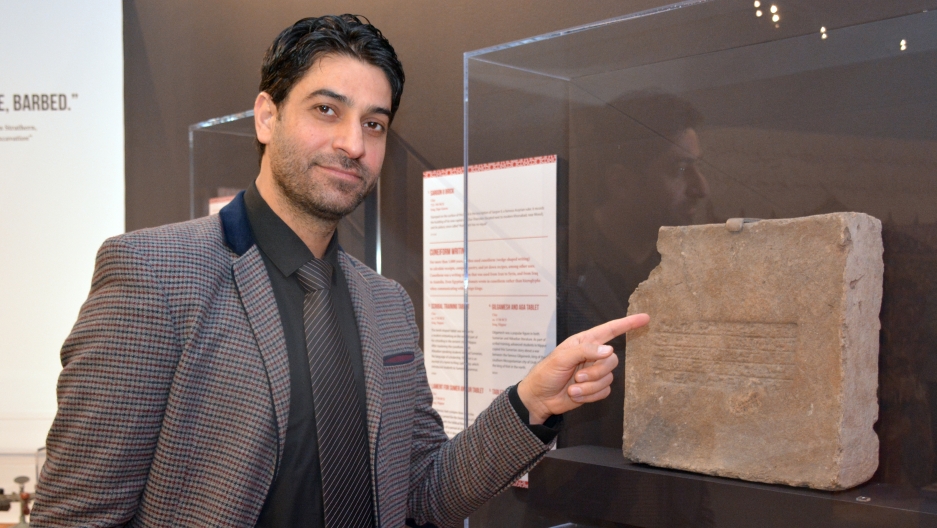
Prior to working at Penn Museum in Philadelphia, Hadi Jasim was an Iraqi translator for the US military. Credit: Courtesy of Thomas Stanley, via PRI
Experts: Federal Policy Change Would Harm Transgender Students
As the Trump administration moves to conservatively define gender under Title IX, there are implications for transgender students on college campuses. (Diverse Education)
This Philadelphia Museum Hired Iraqi and Syrian Refugees as Tour Guides for Its Middle East Gallery
“Being close to your heritage is something that makes you feel like okay, now I’m back. You know, I don’t feel like I’m a stranger [any] more.” (PRI)
Archives of American Art Announces Pivotal Gift from the Roy Lichtenstein Foundation
The $5 million gift will be put towards digitizing material on art and artists from historically underrepresented groups. (Art Fix Daily)
Professors Are the Likeliest Mentors for Students, Except Those Who Aren’t White
A recent survey shows just 47% of alumni of color said they’d had a mentor on the faculty, compared with 72% of white graduates. (Chronicle of Higher Education)
The ‘Decolonization’ of the American Museum
Museums are changing how they view themselves. (Washington Post)
A Humanities Degree Is Worth Much More Than You Realize
Enhancing the public’s understanding of how the humanities can help meet the economic, political, and technological challenges of the future is essential. (The Hill)
International Review: L’Algérie de Gustave Guillaumet by Roger Benjamin
posted by CAA — Oct 26, 2018
The following article was written in response to a call for submissions by CAA’s International Committee. It is by Roger Benjamin, professor of art history, University of Sydney, Australia.
Exhibition review: L’Algérie de Gustave Guillaumet (1840-1887), Musée des Beaux-Arts de La Rochelle (France), June 8-September 17, 2018
In a most unassuming regional museum in France, an exhibition of real art-historical significance opened this past June. For the first time since 1899, the work of the preeminent French Orientalist painter of the later 19th century has been brought together. Gustave Guillaumet is not an obscure artist, as every survey of Orientalism since the great Royal Academy show of 1984 has included his paintings. But the scholarly work had not been done until now, when the fruits of Marie Gautheron’s 2015 doctoral dissertation on the desert and Guillaumet have been brought to bear (Gautheron, M., L’invention du désert: émergence d’un paysage, du début du XIXe siècle au premier atelier algérien de Gustave Guillaumet (1863-1869), Paris Nanterre University).
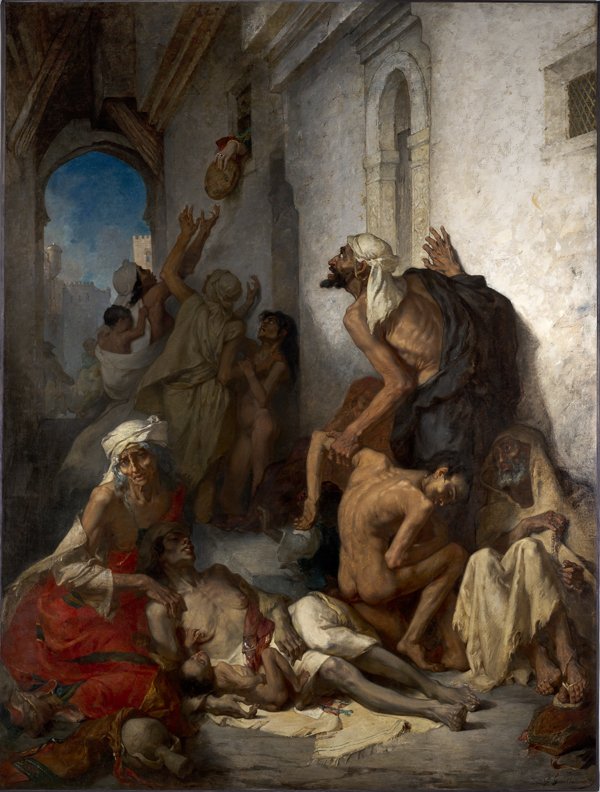
Fig. 1. Gustave Guillaumet, La Famine en Algérie, Salon of 1869, oil on canvas, 122 x 92 in (309 x 234 cm) Le Musée National Public Cirta de Constantine, Algeria (restored for the exhibition).
Many of the works on view in La Rochelle are unfamiliar, coming from regional museums, the artist’s descendants, private enthusiasts, and storage collections of the Musée d’Orsay. The largest single work was thought to have been lost. The Famine in Algeria (Fig. 1), the most disturbing large scale canvas at the Salon of 1869, was known only by a poor woodcut and several drawings. Its subject was altogether too tough—the cadaverous members of two Arab families expiring on the pavement of a city in what was (in French law) a department of France, the province of Algiers in Algeria.
La Famine had been languishing, rolled up and torn in the basement of the National Public Museum of Constantine, Algeria (Le Musée National Public Cirta de Constantine). The research of Dr. Gautheron located it, and through the goodwill of Algerian curators and the political weight of Maître Salim Becha (an Algiers-based lawyer, art collector and philanthropist) the work was sent to France for restoration. A successful crowd-funding campaign led by Annick Notter, chief curator at La Rochelle, paid for the conservator Pascale Brenelli, who spent nine hours every day from early February until mid-June resurrecting the picture.
Guillaumet’s ghastly image of a baby suckling at the collapsed breast of its dead mother goes back through Eugène Delacroix to Nicolas Poussin and classical precedents. Entirely new, however, is his angular figure of an emaciated Arab father who, supporting his fainting teenage son, reaches up for a loaf of bread being handed down from the tiny window of a prosperous home. The outstretched hand is female, bejeweled and, through the curvature of its fingers, evocative of the Jewish beauties painted by Chasseriau in Constantine (1846) and by Delacroix in Tangier (1832).
La Famine’s grisly treatment was probably influenced by photographs of the dying taken in situ. Catalogue author (and leading historian) Jacques Frémaux estimates one third of the indigenous population of Algeria died in the famine of 1866-70, due to drought, locust plague, cholera, and the expropriation of farmlands by European settlers. La famine is unrelieved by aesthetic ‘sweet spots’ like the majestic horseman that Delacroix placed in his Massacres of Chios. We have instead the moral and visual austerity that pervades Guillaumet’s work. A grave witness to these events, Guillaumet was not about to beautify them.
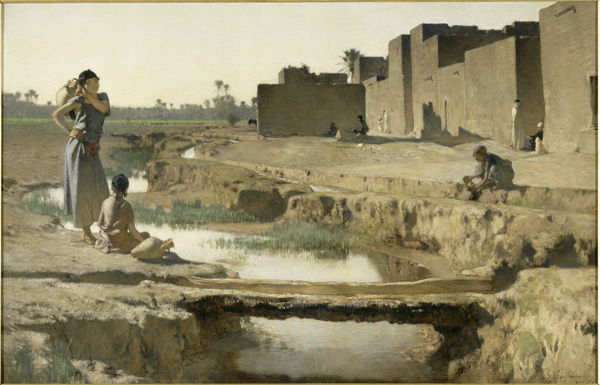
Fig. 2. Gustave Guillaumet, La Séguia, près de Biskra, oil on canvas, 1884, Salon of 1885, 39 x 61 in (100 x 155.5 cm), Musée d’Orsay, Paris.
Almost all of the artist’s best-known landscapes are on view, including The Sahara of 1867, with its camel skeleton and mirage at the horizon with a setting sun, and the dazzling Séguia, Biskra (Fig. 2) of 1884. (Both are usually on display at the Musée d’Orsay). The loan of numerous restored pencil drawings and watercolors from the Orsay was intended to show the genetic relationship between such studies and the resultant tableaux by Guillaumet (who narrowly missed the Prix de Rome for landscape and ended up heading to Algiers in 1862 rather than Rome). (Fig. 3)
It came as a shock to learn that many of these drawings could not be exhibited on the second floor of the eighteenth-century mansion that houses the Musée de la Rochelle, as it was condemned by city architects one week before the scheduled opening. Despite the best efforts of the staff, this major exhibition was opened in almost third world conditions: a building with the floor above held up by a dozen massive steel columns, no air conditioning, and inadequate spotlighting. Yet historic La Rochelle is a wealthy city, with a new 5,000-boat marina and an opulent public library, the Mediathèque, nearby. City and provincial authorities must reward the enterprise of its art curators by providing an adequate home for future temporary exhibitions and permanent collections.
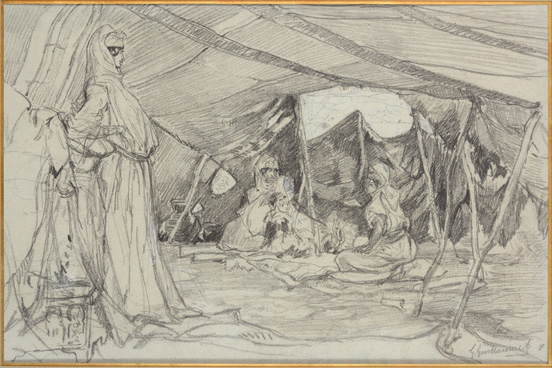
Fig. 3. Gustave Guillaumet, Sous la tente, graphite pencil on paper, 9.5 x 17 in (24 x 44 cm), private collection. Photo: A. Leprince.
Fortunately, L’Algérie de Gustave Guillaumet will travel to two other regional museums in much better condition: the Limoges Fine Arts Museum and the celebrated La Piscine, a converted Art Nouveau baths complex in the northern city of Roubaix. And happily, the catalogue, a scholarly book with first-class production values and superb plates, perfectly represents the project. Its backbone is the set of four chapters by Gautheron, a former academic teaching art history and visual culture at the École normale supérieur de Lyon, along with detailed entries on key works and a documentary apparatus at the end. Gautheron was careful to enlist a range of other writers, including Algerian literary figures like Leïla Sebbar, and art historians from Algeria, the United States, Australia, France, and Ireland. For her part Gautheron has also completed a 300-page monograph on Guillaumet that is awaiting publication.
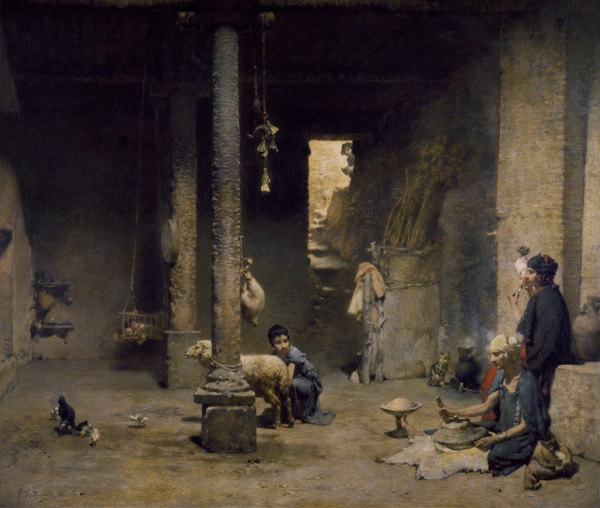
Fig. 4. Gustave Guillaumet, Habitation saharienne (Cercle de Biskra), Salon of 1882, oil on canvas, 58 x 68 in (146.1 x 173.4 cm), Chrysler Museum of Art, Norfolk, Virginia, gift of Walter P. Chrysler, Jr.
Guillaumet, like the admirable Eugène Fromentin before him, traveled initially in Algeria in close connection with the officers of the French army and its political wing, the Bureau Arabe. His stunning series of interiors of Arab houses, made in the oasis villages of Biskra and Bou-Saâda, were made possible by the intervention of the Commandant’s wife (as the artist narrates in his text “Les intérieurs,” from his book Tableaux Algériens). Crowning the series but absent from the exhibition was the key Guillaumet work in America, Saharan Dwelling (Fig. 4), recently loaned by the Chrysler Museum of Norfolk Virginia to the Institut du Monde Arabe in Paris (see the author’s Biskra, Sortilèges d’une oasis, Paris and Algiers, 2016, pp. 90-91). Scenes of women and their daughters working at looms, the first of their kind and highly influential on the next generation, complement Guillaumet’s earlier assemblages of men, camels and horses on the barren plains—at prayer, at market, or on a military bivouac. Guillaumet, an admirer of J. F. Millet, produces high naturalism, except in one key respect: he always excludes the colonizer and his works. Absent are the soldiers in uniform, colonists directing Berber farmworkers, the modern buildings and telegraph wires at Bou-Saâda, the military hospital at Biskra where the painter convalesced in 1862, or the British tourists who by the 1880s were encumbering the desert scene. Guillaumet’s vision is not a “painting of modern life” as exemplified by the traveler Constantin Guys in Istanbul. It is an image of Algeria as it used to be: a country and a people that won the admiration of foreign travelers, intellectuals and officers, even as their invasive actions helped bring about its demise.
News from the Art and Academic Worlds
posted by CAA — Oct 03, 2018
Spelman College Awarded $5.4 Million Grant to Increase Diversity in Museum Field
The grant will establish the Atlanta University Center Collective for the Study of Art History and Curatorial Studies. (Press release)
The Guerrilla Girls Are Helping Museums Contend With #MeToo. Read Their Proposed Chuck Close Wall Labels Here
The feminist collective shows how to call out—or gloss over—accusations against artists accused of sexual misconduct. (artnet News)
Research Study: Impact of Art Museum Programs on K–12 Students
This study builds on and amplifies previously limited research on the impact of art museum programming. (NAEA)
Guggenheim Museum Announces Free Admission for Students, Faculty, and Staff at Five CUNY Schools
The museum’s new program will provide over 100,000 New York City college students with free admission. (Press release)
The Getty to Start a Research Center for African-American Art
The Getty’s initial partners include the Studio Museum in Harlem, the California African American Museum, Art+Practice, and Spelman College. Dr. Kellie Jones, 2018 CAA awardee for Excellence in Diversity, will be a senior consultant for the project. (New York Times)
Seven Tips for Greater Accessibility at Events
“In 2018 accessibility means more than a ramp or an elevator. It means giving everyone a chance to experience your presentations, events, exhibits, and collections.” (American Alliance of Museums)
Registration Now Open for the 2019 CAA Annual Conference
posted by CAA — Oct 02, 2018
2019 CAA Annual Conference
New York Hilton Midtown
February 13-16, 2019
Four days for everyone in the arts with over 300 sessions and panels, dozens of receptions and parties, professional development workshops, lightning talks, and exhibitors. #CAA2019 #CAANYC
The CAA Annual Conference returns to New York in 2019. From February 13-16, at the New York Hilton Midtown, we welcome all those in the visual arts to attend over 300 sessions and professional development workshops, and dozens of receptions, parties, and special tours at local museums and cultural institutions. The Book and Trade Fair and the Cultural and Academic Network Hall, with hundreds of booths showcasing the latest products, programs, and books, will occupy three floors of the Hilton New York Midtown. Our partners offering free admission and special tours this year include The Frick Collection, The Morgan Library & Museum, The Jewish Museum, Dia Art Foundation, the Rubin Museum of Art, the New York Public Library, the Neue Galerie, and many others.
The 107th CAA Annual Conference content will address the full breadth of the field of visual arts and design and examine a range of cultures, histories, and scholarship. We anticipate more than 5,000 professionals in the arts to attend the conference in New York. Sessions will include “Below the Mason-Dixon Line: Artists and Historians Considering the South,” “Deskilling in the Age of Donald Trump,” “Immigration and Inclusion in Art Museums,” “Supporting Immigrant Artists and Communities,” “Mapping Crime,” “Endangered Data,” and “Racist Human Mascots: A Guide for Artists and Designers to Determine the Qualifications of Racism in Commercialized Art,” among hundreds of other panels.
The Distinguished Scholar for the 107th CAA Annual Conference is Dr. Elizabeth Boone, the Martha and Donald Robertson Chair in Latin American Studies at Tulane University. Dr. Boone specializes in Pre-Columbian and early colonial art of Latin America.
New this year, the CAA Annual Conference will feature twenty professional development workshops supported by The Emily Hall Tremaine Foundation. The workshops add to CAA’s annual workshop offerings for a total of thirty available workshops at the Annual Conference. The Emily Hall Tremaine Foundation workshops will be led solely by MFA candidates and adjunct faculty with the aim of strengthening practical, hands-on skills for studio artists as well as providing professional development opportunities.
Once again, CAA will offer a number of travel grants and scholarships to individuals looking to attend the Annual Conference. With the generous support of Blick Art Materials and Routledge, Taylor & Francis, CAA will provide eight student member registrants with $250 each to attend the conference.
We look forward to seeing you in NYC!
Please contact Member Services at membership@collegeart.org or at 212-691-1051, ext. 1 with any questions.
News from the Art and Academic Worlds
posted by CAA — Sep 26, 2018
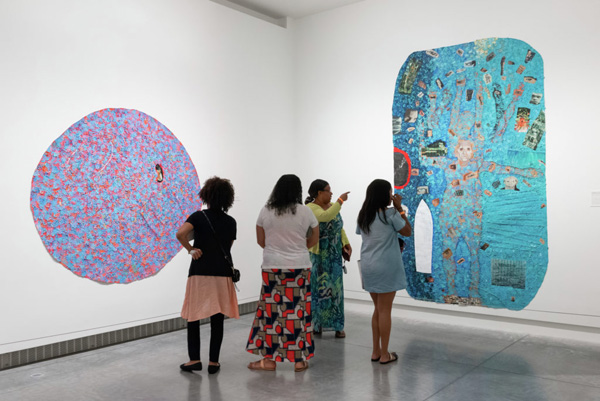
Installation view of Howardena Pindell: What Remains To Be Seen at the Virginia Museum of Fine Arts. Photo: David Stover © Virginia Museum of Fine Arts, via artnet News
African American Artists Are More Visible Than Ever. So Why Are Museums Giving Them Short Shrift?
Since 2008, just 2.4% of all acquisitions and gifts and 7.6% of all exhibitions at thirty prominent American museums have been the work of African American artists, according to new research published by artnet News and In Other Words. (artnet News)
Creativity From the Chaos of Hurricane Maria
One year later, artists in Puerto Rico talk about how the devastation and its aftermath influenced their work. (New York Times)
The Underrepresentation of Latinx Faculty and the Future of Higher Education
Latinx faculty from around the country share how underrepresentation has impacted their work. What will it take to chart a different future in higher education? (Latinx Talk)
Mission Accomplished?: As Mainstream Art Museums Rush to Diversify, What Is the Role of Culturally Specific Museums Working for a Cause?
Culturally specific museums are uniquely positioned in current discussions of equity in the art world. (ARTnews)
How Can You Make Big Classes Feel Smaller?
Emails sent at key moments during the semester are one strategy to help personalize large lectures. (Chronicle of Higher Education)
Why Your Doctor May Be Prescribing Art Classes in the Future
A recent UK study found that 66% of doctors believe the arts have a positive role to play in the prevention of illness. (Artsy)
News from the Art and Academic Worlds
posted by CAA — Sep 05, 2018
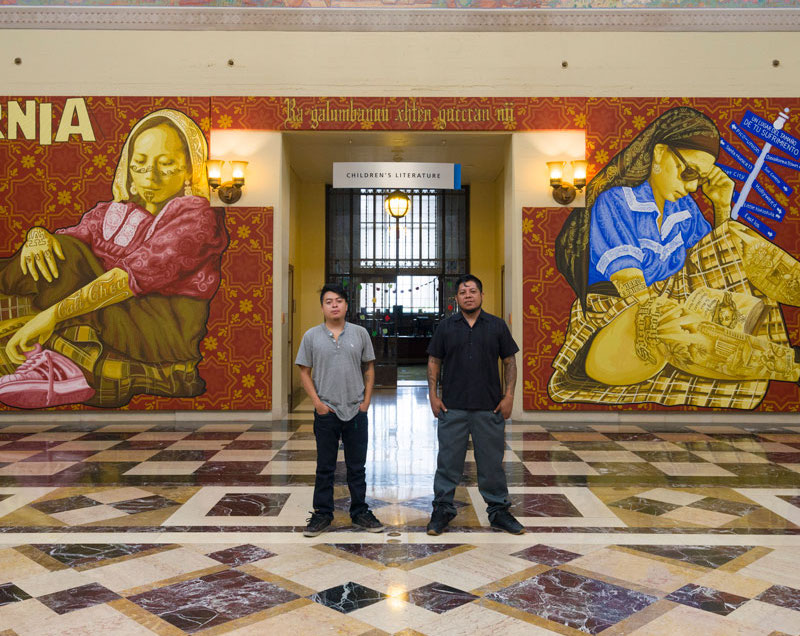
After completing murals for the Los Angeles Public Library, Oaxacan collective Tlacolulokos members Cosijoesa Cernas and Dario Canul were subsequently barred from re-entry to the United States. Photo: Jeff McClane/LAPL via LA Taco
Brazil Museum Fire: ‘Incalculable’ Loss as 200-Year-Old Rio Institution Gutted
Brazil’s oldest and most important historical and scientific museum was consumed by fire, and much of its archive of 20 million items is believed to have been destroyed. (The Guardian)
Is This the Future of Catalogues Raisonnés?
A new online database of Sol LeWitt’s wall drawings offers a template for a more up-to-date—and perhaps richer—resource. (The Art Newspaper)
A Symbol for ‘Nobody’ That’s Really for Everybody
Read CAA Committee on Design member Elizabeth Guffey’s tribute to the International Access Symbol on its 50th birthday. (New York Times)
These Oaxacan Muralists Brought Indigenous Flavor to The Central Library; Now They Are Deported
After completing a monumental mural project on indigenous empowerment at the Los Angeles Public Library, Oaxacan collective Tlacolulokos were subsequently barred from re-entry to the United States. (LA Taco)
Why I Did Not See the Picasso Show at the Tate Modern
“It was with a certain incredibility that I discovered the museum was hosting a major Picasso exhibition titled Love, Fame, Tragedy. Nevertheless, I wanted to see the show for myself.” (Hyperallergic)
It Takes a Village: Are You Getting These Six Perspectives for Your Exhibition?
Rarely are the folks on the front line heavily involved in the decisions they’re going to have to live with. (American Alliance of Museums)
Hunter O’Hanian in Conversation with Eric Segal, Director of Education and Curator of Academic Programs at the Harn Museum
posted by CAA — Sep 04, 2018
CAA’s executive director, Hunter O’Hanian, recently visited the Harn Museum of Art in Gainesville, Florida to speak with Eric Segal, the museum’s director of education and curator of academic programs, about the role of academic art museums and Resources for Academic Art Museum Professionals (RAAMP).
A project of CAA supported by the Andrew W. Mellon Foundation, RAAMP aims to strengthen the educational mission of academic museums and their parent organizations by providing a publicly accessible repository of resources, online forums, and relevant news and information.
Watch and read the interview below.
Hunter O’Hanian: Hello everybody. My name’s Hunter O’Hanian and I’m the director of the College Art Association. I’m very pleased today to be with Eric Segal, who is the director of education and curator of academic programs here at the Harn Museum in Gainesville, Florida. Hello, Eric. How are you?
Eric Segal: Hunter, I’m doing well. It’s great to have you here in Gainesville.
HO: Well, it’s absolutely beautiful. It’s been great to be spending time here and to go through the museum. Before we start, tell us a little bit about your background. I know you’ve been a CAA member since you were in graduate school, but tell us a little bit about your professional background.
ES: Sure. CAA since 1993.
HO: Yay.
ES: I actually started my college career as a computer engineering major. So, it was a big change when my sister made me take an art history class and that led me into art history, and I studied American art subsequently at UCLA, Masters.
HO: And, I think you won a Terra award, too.
ES: I was really fortunate to have a Terra award in 1999.
HO: Great.
ES: And that was very exciting for me and helped me in my studies. Following the completion of my doctoral dissertation, I took an assistant professor position here at University of Florida. So, I was in the art history department teaching undergraduate and graduate courses in American art, African American art, illustration and even occasionally about museum theory. Later, in 2010, a position opened up in the museum where I was able to take on museum practice a bit more. That position was the academic programs position, which had just been created as the museum realized it was important to draw closer to the university. At that time, before the position opened up, there were perhaps a few dozen courses using the museum, because there was no one doing the outreach to work with faculty across campus.
Since that time, about 10 years, we’ve maybe increased that tenfold. The number of courses, the number of faculty, the number of disciplines and students using the museum—we’ve been really delighted to expand that quite a bit.
HO: That’s great. So, [the] University of Florida here in Gainesville, about 50,000 students here on campus.
ES: Yes.
HO: You have an art history department here. And do you have a studio arts department as well?
ES: It’s a combined school of art and art history and they’re both very robust. There’s a faculty of about seven in art history and the tens, twenties in art and they’re all great colleagues. In fact, in 2019 we will have the studio art faculty show here at the museum, which comes [around] every five years.
HO: Wonderful. So, the Harn Museum has been around since 1990. Roughly, how big is it? How many square feet is the facility?
ES: The museum is about 26,000 square feet.
HO: That’s big for an academic art museum.
ES: It is. We have all of our storage onsite. We have great galleries devoted to five collecting areas. We collect in African [art], in Asian [art], in photography, in modern and contemporary art. And we have a curator in each area. So, we’re very lucky. Many academic museums don’t have such a robust curatorial staff. And we also have classrooms where we can do teaching, where we can bring objects out from storage in order to connect with academic classes on campus if we have a theme we want to try to address, say, “urban imagery.” It may be better just with works that are in storage, rather than those that happen to be on view at a given time.
HO: And 11,000 objects in the collection?
ES: That’s right.
HO: Wow. And so how do you go about procuring objects for the collection?
ES: Right. So our curators are very active along with our development officer and our director in building relationships. So, we do have an endowment for acquisitions, but many of our acquisitions do come through gifts from donors, and that would be in all areas.
HO: I noticed too in going through the museum with you that you also have a fair number of Florida artists in your collection. Can you speak about some of them?
ES: We have Florida artists from the 19th century through the present. Some of them are former faculty at UF with international and national reputations, and some include folk artists who work locally and are widely collected and whose work reveals unexpected and inspiring perspectives on our own community. So, we have both highly-trained professional artists and amateur or untrained artists.
HO: It seems to me also that you’ve done a lot of work in your role as far as inviting members of the local Gainesville community, people who are not part of the academic campus on or into the museum through different programs. Can you talk generally about how you’ve been programming in trying to bring the local Gainesville community into the museum?
ES: Sure. So, as curator of academic programs, I obviously personally focus a lot on the academic community, but I’m also director of education as you mentioned, and I have a staff with whom I work to engage the community. I also consider that my responsibility as well. We have public programs that I think of as creating layers of access. There’s programs that are traditional museum programs of lectures and educational docent tours, which have immediate appeal to people who are familiar with museums and have a museum-going experience and know they might want to learn something about an exhibition, but we also have our whole range of activities that invite the community in perhaps for a first time. We’re creating museum goers out of our local citizenry.
So, those might be experiences that sound more fun and social, but include informal learning opportunities. We have a museum nights event once a month which is open in the evenings. So, lots of programs such as that, but we also think it’s really important to reach audiences that aren’t even looking at the museum as a possible venue for leisure or art experiences and we find it’s really effective to work with the local public schools. All children go to schools and we’re able to work with them to provide transportation and rich tour experiences and programs that engage children and parents as well. Creating the opportunity to connect with families that might not be thinking of the museum, but may learn from the children that it’s a really welcoming, relevant, and meaningful space.
HO: Overall for the whole museum, how big is the staff here?
ES: The staff, including security and frontline staff, is about fifty.
HO: Wow. Great.
ES: So, it’s pretty robust.
HO: And for academic programs and education, how big is that?
ES: In education, we have six full-time staff and a number of part-time staff who support programs and activities. So, we’re also very lucky. There are smaller museums that are working on a narrower range of staff resources.
HO: What challenges do you see for the education programs here at the Harn Museum going forward?
ES: Well, you did ask about our connecting with community audiences and our challenge is to continue to grow that and be relevant and to let audiences know that we are welcoming. We want to reach audiences that have not seen themselves in museums. So, diversity in our audiences is something we’ve done a lot to improve with by partnering with local groups, with activists, with people in different communities. We’ve done a lot to improve our diversity of audiences, but we’re still expanding there. In staff, that’s another area where we really need to work hard and we have focused part of our strategic plan extension into 2019 to focus on developing new ways to build diverse staff members across the museum, including in senior staff, which as we know in museums in the United States is a real problem.
HO: If you were speaking to someone else in your position, maybe in a more rural location or a smaller facility, and they wanted to engage the community more, what advice would you give them?
ES: That’s a great question. I think that it’s really important to let audiences know that they’re welcome and to my mind, the best way to get that message out there is by being out in the community, attending community fora on relevant topics, being part of discussions of education and educational resources, being part of discussions on how universities are trying to engage—the local university or college may be trying to engage the community, both on campus and in the community. Being a face in the community makes you somewhat approachable and starts to build the relationship that’s hard to build with an advertisement in the paper that says, “Everyone’s welcome. Admission is free”. Hopefully.
So, that would be one of the first steps that I think I would try in that position is to really be part of the community and to make contact with community leaders who already have authentic connections to different members of different areas of the community.
HO: We’re going to be recording some video practicum about different areas in the museum and we’ll get into some more of those details later, but it also seems as if you’ve developed good relationships with different departments within the college itself. Can you speak a little bit about doing that and how you go about being successful there?
ES: Some of our failures in doing that have been—not that I wouldn’t continue to do it—you know, I go and give a talk to the faculty senate and I send a letter to all faculty and I get a lot of emails back, if I’m lucky, that say, you know, I saw your email but I didn’t read it last year because you sent it to everyone. So, the hard work is making individual contacts either by email but also being out there again on campus. I try to serve on committees, be it in the international center or on undergraduate curriculum, wherever it might be useful, seeing that the museum could be a resource that can be built into emerging programs and projects. So, being at the table is important. And then building the individual connections to faculty. One faculty member in a language and literature department can be your ambassador to other faculty members.
HO: And, of course you’re familiar with RAAMP resources for academic art museum professionals, and the Harn has been one of the original stakeholders, and this has been a great project that CAA has worked on with the Mellon Foundation.
ES: Yes.
HO: We’ve been very happy with the success. As a resource out there, how have you been able to use RAAMP and also were there any changes you’d like to see to it or more things you’d like to see us add to it?
ES: Yes. RAAMP is a great resource. It’s been wonderful to see it grow and the website has, for anyone who hasn’t visited it recently, really been improved in the last year, making it searchable in a way that it wasn’t before. So, it’s a resource where you can actually find the materials that are there pretty easily now and that makes it especially useful. So, for me, it’s been great as a source of inspiration when I come up against a problem such as “How do I…?” I haven’t found this one yet, but one of my problems is how do I connect with low temperature physics? I’ve never solved that problem, but when someone posts that to RAMP, that’s where I’m going find it.
HO: Great. So, for any of you out there who have an answer to that quick question as to how to deal with low temperature physics, please post it on RAAMP now.
ES: That’s right. But, it’s really a great source of inspiration [for] problem solving and models that exist out there. It’s also I think increasingly going to continue to serve the role of [a] point for conversations, which is something that I’m really looking forward to, because sometimes someone hasn’t posted on low temperature physics, but they may have already done it. And so it’s a chance to get feedback and ideas. I’m also really looking forward to in the future ideas about building diversity, as we discussed earlier. How it’s being pursued at other museums, both in terms of audiences but also in terms of staff. I think as a community academic program officers in museums need to come together to build the pipeline of museum professionals. That includes recruiting students when they’re young. I’ve been working with high school students in the past week to just tell them that museums are a career and that’s important.
It includes supporting internships. I think that discussion can happen in RAAMP about how we can sort of strategically create a pool that we’re all going draw on to diversify our staff. I’m also looking forward to learning from RAAMP more about ideas for academic programs working with development offices.
HO: Interesting. The fundraising piece.
ES: Yes. The fundraising piece. We’re all challenged in our budgets. In the past year, we’ve developed a program on early learning that we built with the college of education, and we built a really robust project, and someone said: “You need to do a video for this.” And that video has been helpful for us in developing private funds to continue to pursue this program that provides education for headstart students.
HO: Which is great, because it gives potential funders the opportunity to see what the programs are really about and be able to see that.
ES: It is. And that’s the kind of thing I’d love to share on RAAMP and also learn from others their strategies for taking our programs and having them be tools for building our funding.
HO: Yes. I’ve been recently reviewing the session proposals for the upcoming CAA conference in New York in February of 2019 and there are a lot of sessions that are coming up for professionals in academic art museums, because I do think it’s a growing field that a lot of PhD students or PhD holders and Masters will be going into it in the future. So, there will be a lot at this year’s conference in February.
ES: That’s really great to hear. And I hope that non-museum professionals, hope that artists and art historians will attend those as well, because their voices are really useful to be part of those conversations that art museum professionals are having. I was thinking about the sort of professionalization that another area of RAAMP is going help us connect on is going to be evaluation. Museums are always challenged in terms of evaluation. We know it’s important to prove that what we do is effective. Evaluation is time-consuming or expensive or both, and sharing expertise and ideas in that area I think is going to be something that’s going to really help us to build our case in the future.
HO: Yes, I mean, ultimately all museums are educational institutions, and we have to be able to quantify how that happened.
ES: I think that is the case.
HO: Eric, thank you so much for your time here. It’s been great to tour the museum and I really have appreciated it. And so good luck with all your work going forward.
ES: Thank you, Hunter, for sharing your interest of the museum with our RAAMP audiences.



